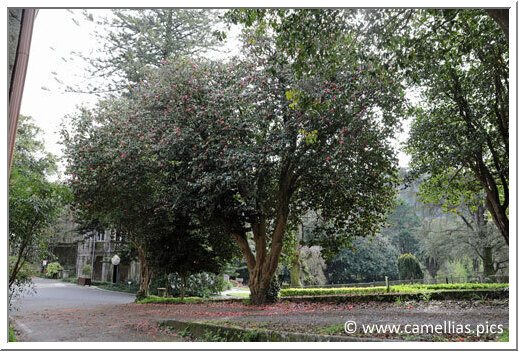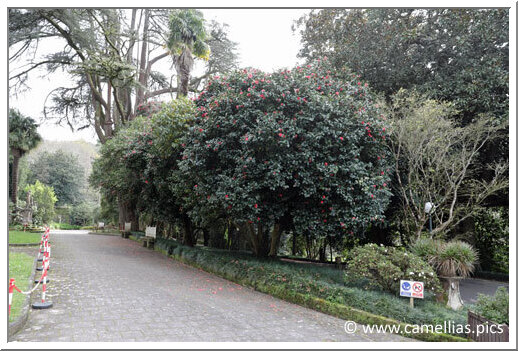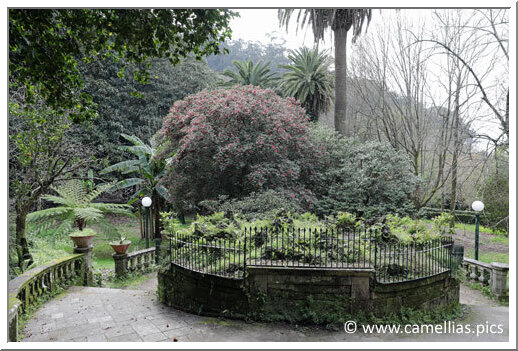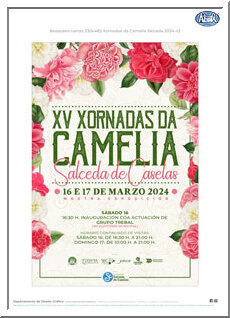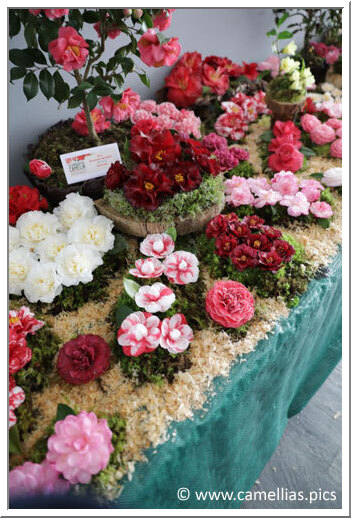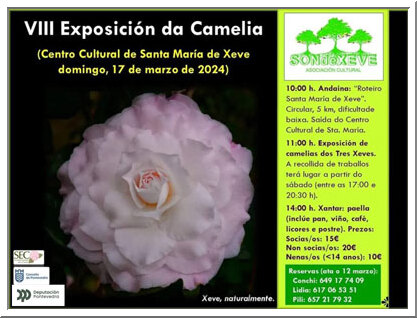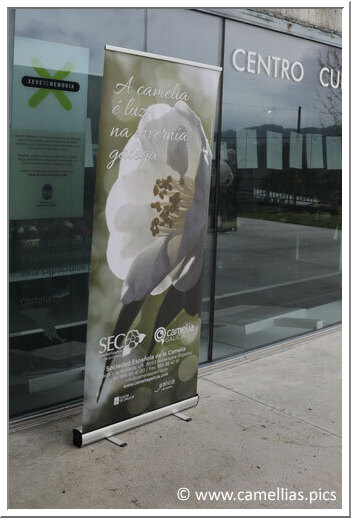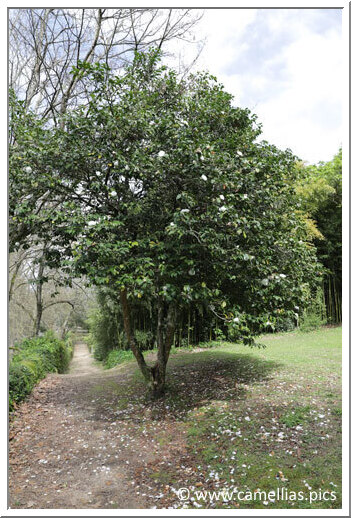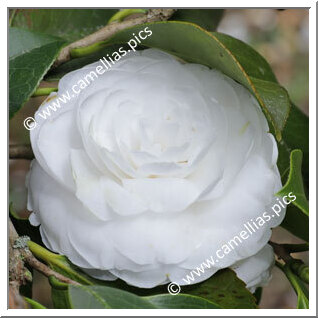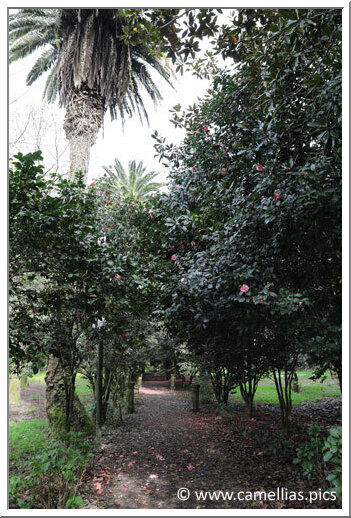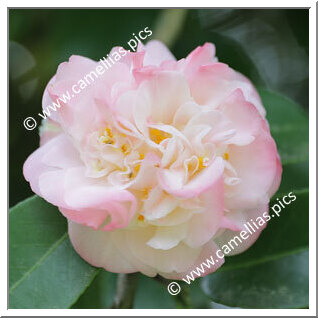Visit - Discover Galicia through the Route of the Camellias and the exhibitions of the Sociedad Española de la Camelia (SEC) - Spain
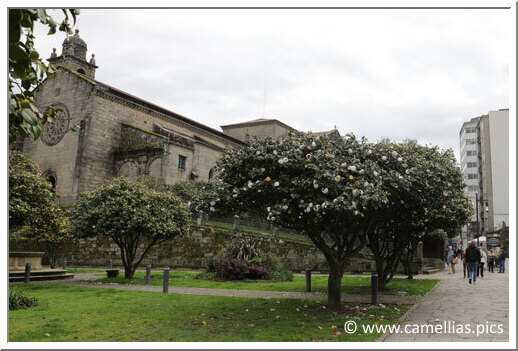
Camellias can be found everywhere in Galicia, as in Pontevedra (above), whether in town or in every little garden. In 2006, Finca Areeiro, the Sociedad Española de la Camelia (SEC) and the regional government of Galicia (Xunta de Galicia) created The Route of the Camellias to promote this flower so closely linked to the region. The route now includes 15 historic gardens, including Finca Areeiro. What's more, throughout the camellia season, numerous exhibitions are organized, which we report on our Camellias news page. These are the posters we received from the SEC and published on this page. And it's thanks to these exhibitions and the photos we've seen of them that we've decided to take a little trip to Galicia. In addition, we visited a traveling exhibition on the theme of Camellia in Salceda de Caselas.
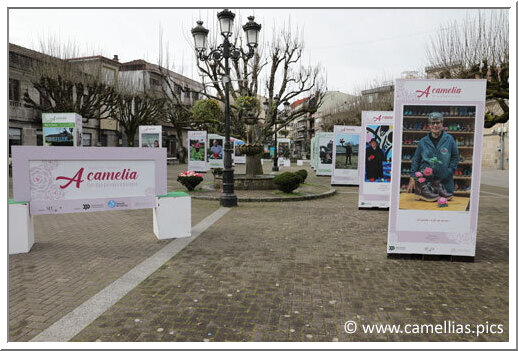
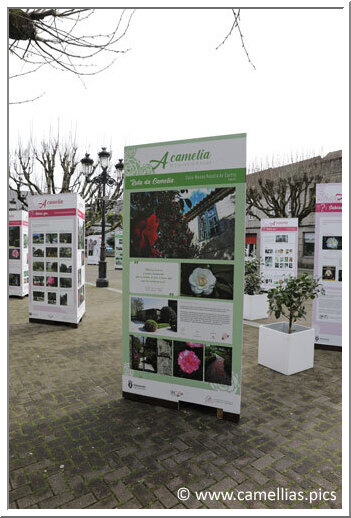
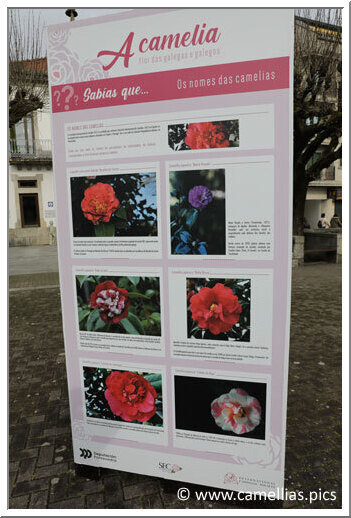
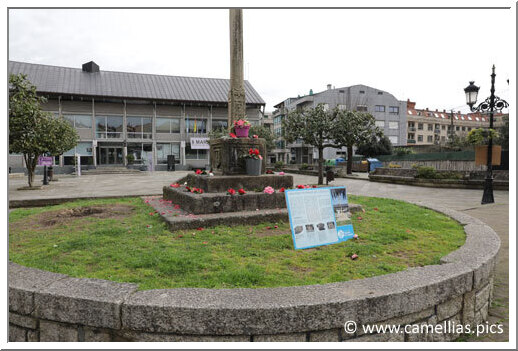
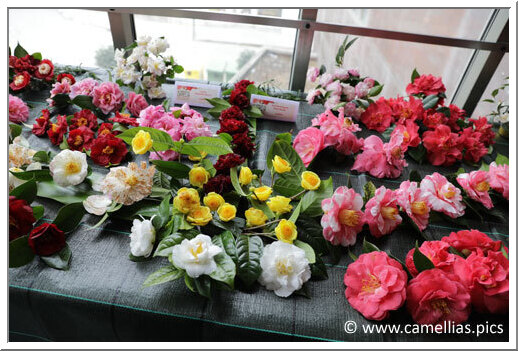
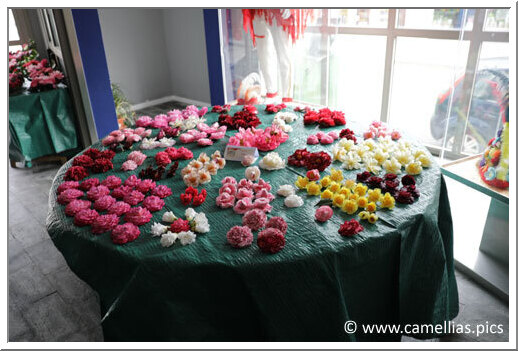
In a region other than Galicia, the flower's color would probably not have had the same intensity. It was different at Nuccio's Nursery, where we came across it, as well as in a private garden in Italy. This, too, is the charm of camellias, offering different flowers for the same cultivar, depending on the region where it's grown.
Florence and I had known each other since 2005. She had been a camellia enthusiast for many years and had traveled extensively in Europe to reconstitute old European collections in the United States, where she lived.
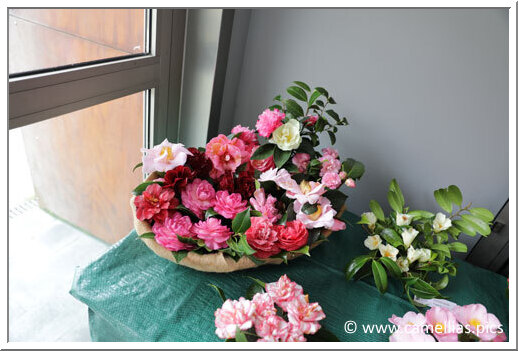
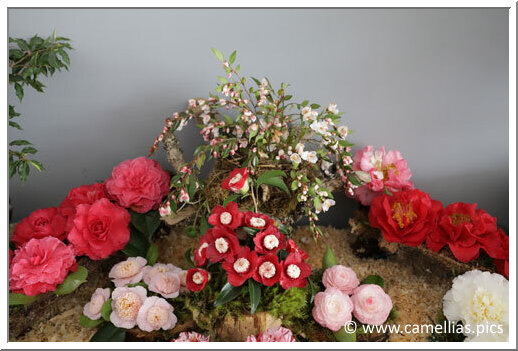
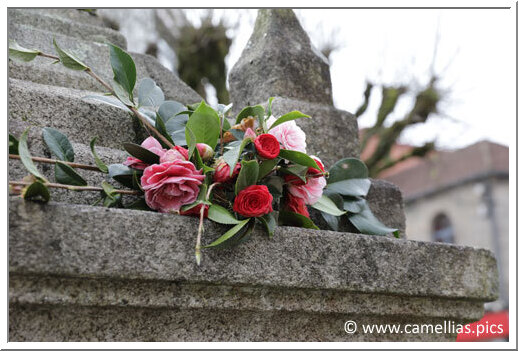
Then it's on to Xeve, for the second exhibition. This one is smaller, but just as tasteful and well-researched. Even if an exhibitor only has two camellias in his garden, he'll try to show them off to their best advantage.
We enter the cultural center to admire the exhibition.
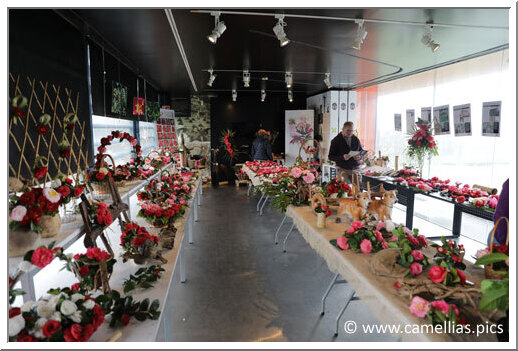
Below, details of a composition:

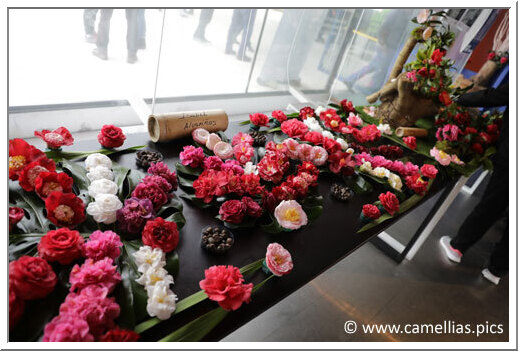
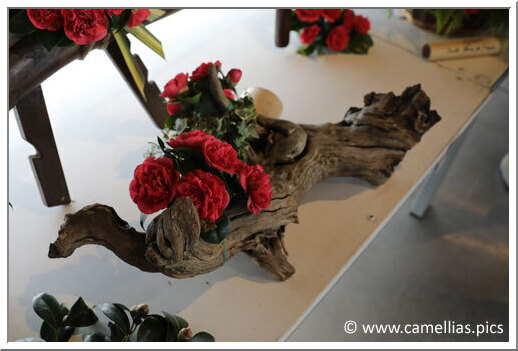
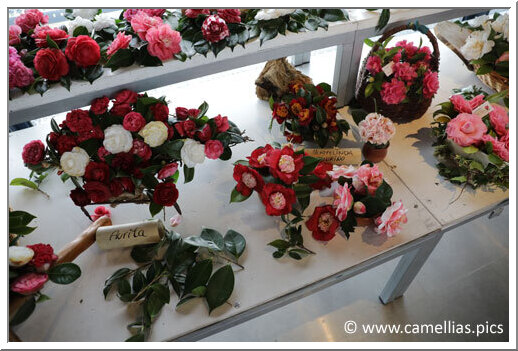
After the exhibitions, here's an overview of the Camellia Route. We weren't able to visit all the gardens on offer, but we did stop off at several public gardens and at Finca Areeiro (to which we've dedicated another page). Here are a few photos to give you an idea of the places on offer.
To begin with, the Pazo Museo Quiñones de Leon. The manor house is now a museum of regional art. Its gardens feature some very old camellias, the first of which were planted in 1860. Part of the garden can be visited outside museum opening hours.
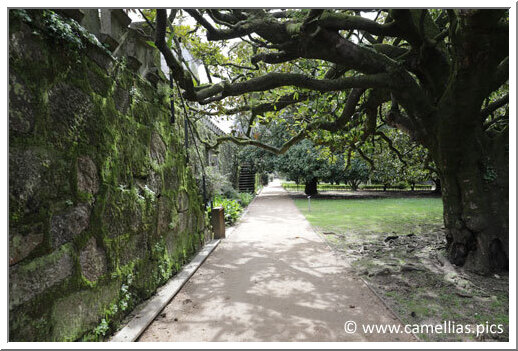
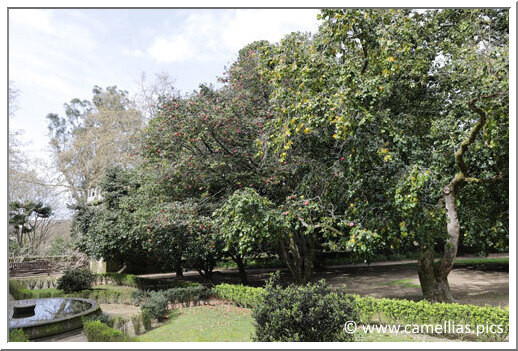
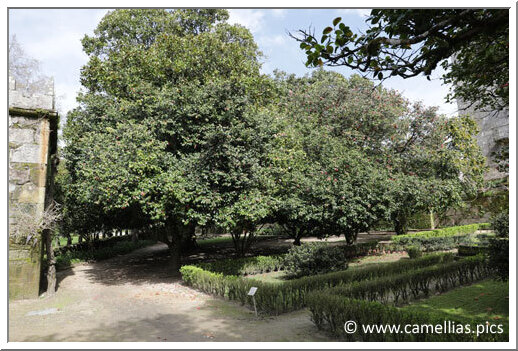
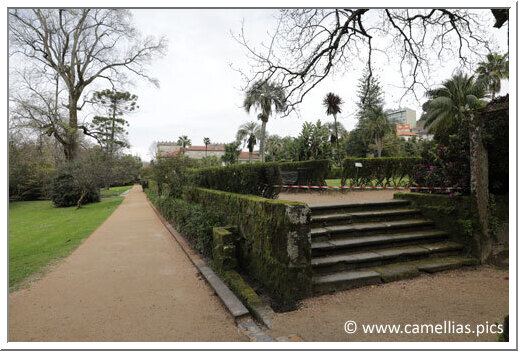
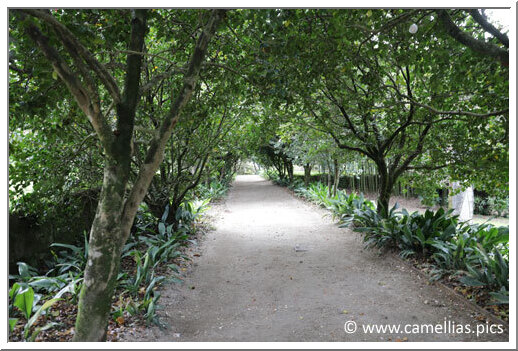
Then the Parque do Castro. This is a municipal park that extends beneath the remains of the Citadel (which you can visit to enjoy the view over the city).
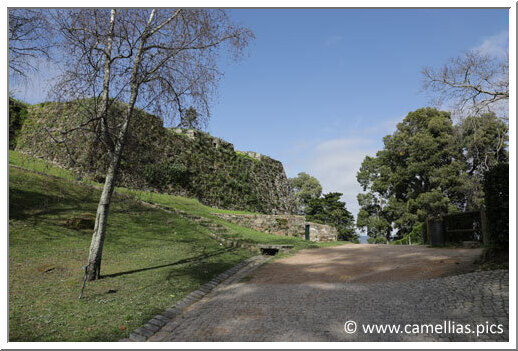
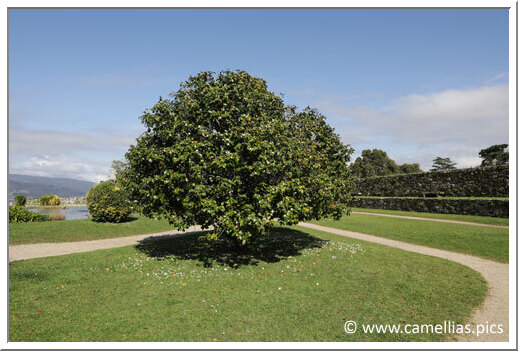
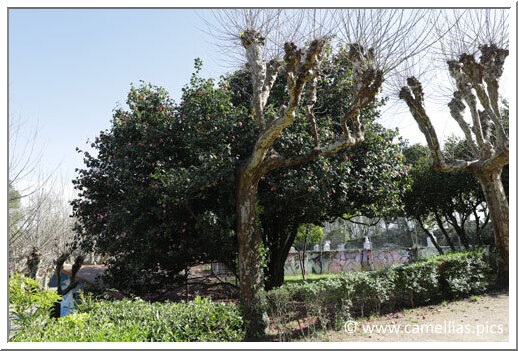
It's along this path that you'll find the remarkable camellias.
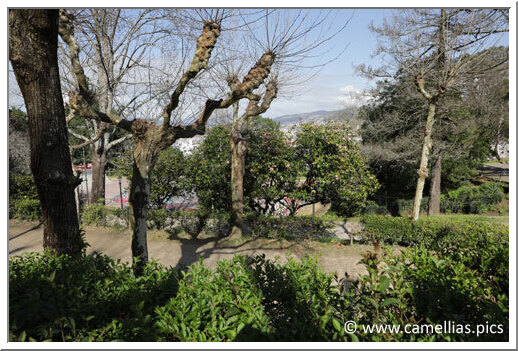
In Santiago de Compostela, the Parque da Alameda. This is the city's main public garden, just a stone's throw from the historic center and the Cathedral.
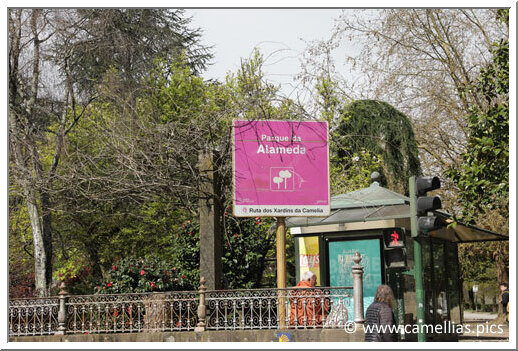
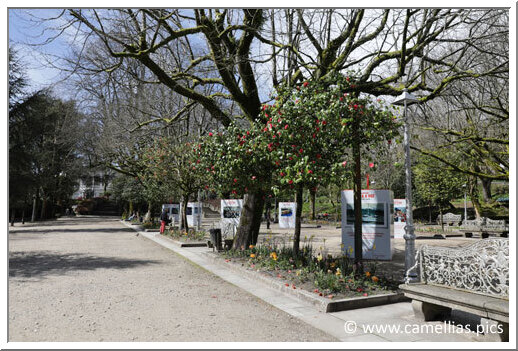
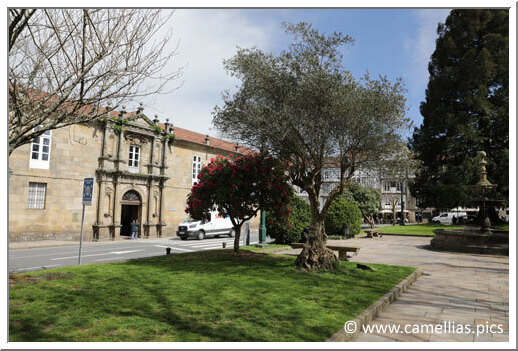
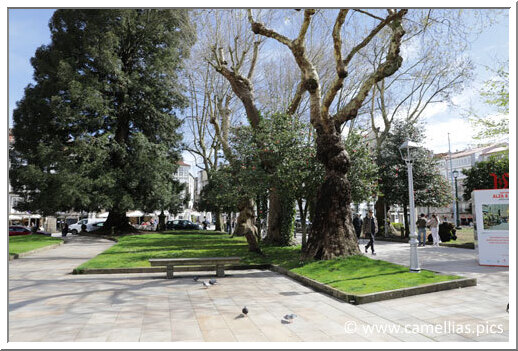
Then on to the Museo Rosalia do Castro, for its garden after the museum visit. Here you can admire some beautiful camellias.
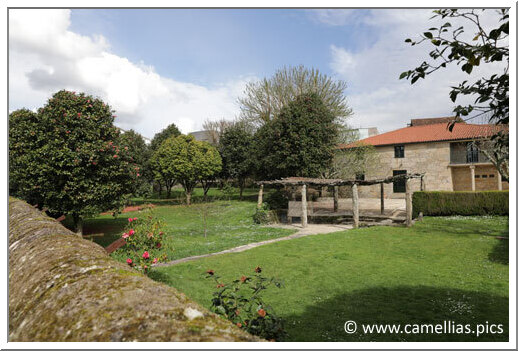
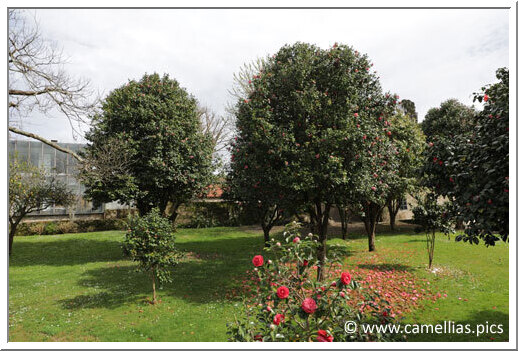
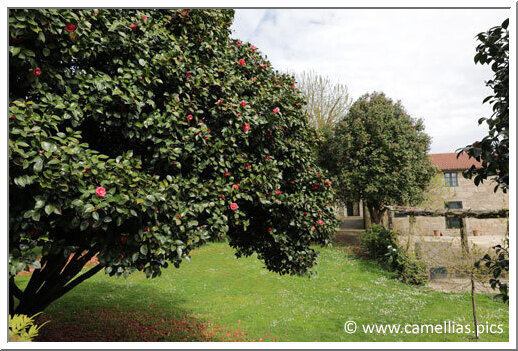
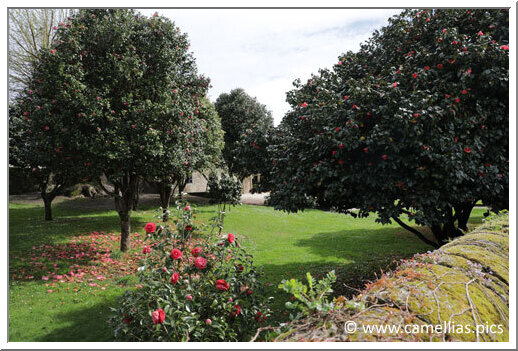
Finally, the Pazo de Lourizan, acquired in 1940 by the Deputación, is now the Lurizán Forest Research Center. The garden is open to the public and offers a stroll through old camellias.
